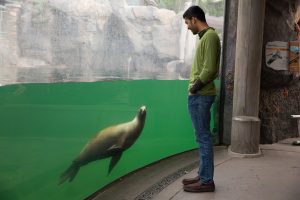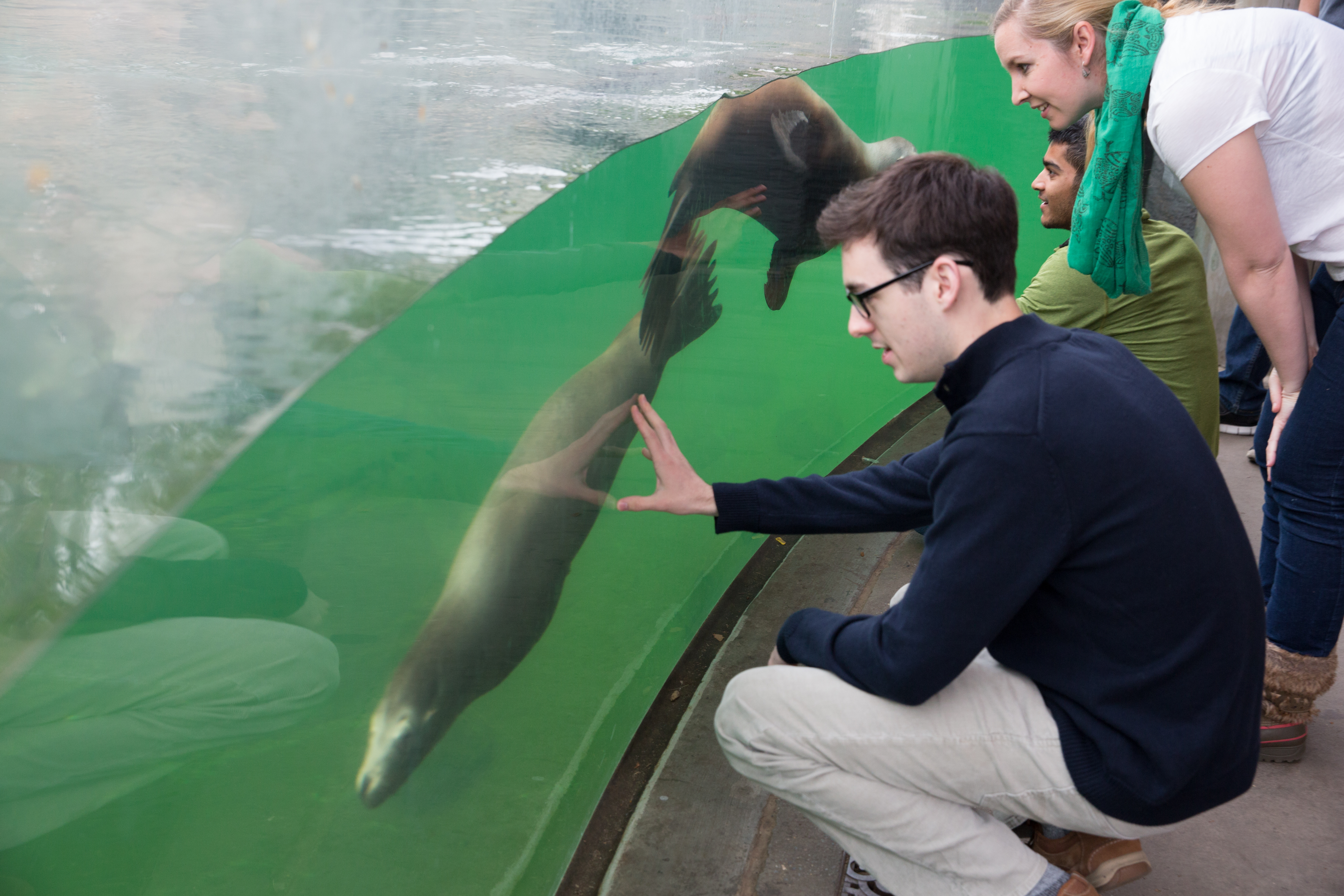Megan Leftwich, Ph.D. our Spotlight Scientist talks about sea lion swim behavior, engineering research, and mentoring the next generation of scientists.
Megan Leftwich, Ph.D. is an Assistant Professor of Mechanical and Aerospace Engineering at the George Washington University. She recently published a study in JoVE Video Journal describing a robotic platform to understand swim behavior of the California sea lion.
JoVE caught up with Megan Leftwich to get some insight into nature-inspired engineering research.
Q.Tell us a little bit about the inspiration behind this research.
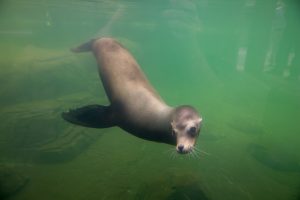
A. I studied swimming all my life. I love watching how animals swim. Five years ago, my family and I moved to Washington D.C. One day, I was at the Smithsonian National Zoo with my kids watching sea lions swim. They swim very differently, pulling themselves with their arms, like a human breaststroke. This got me interested in exploring if we could replicate this motion in the lab for engineering based applications.
We started collaborating with the Smithsonian National Zoo, and over the next two years, my students and I collected over hundred hours of video footage on sea lion swim movement. Back in the lab, we decoded these movements, applying mathematical modeling and used 3D printing technology to build a robotic fore flipper.
Q. What are some of the applications of this research?
A. As a community, we are interested in understanding aquatic propulsions. I have recently started a project with the US Office of Naval Research exploring the flexibility of sea lions. We are investigating whether sea lion swim movement can help design highly maneuverable deep-sea vehicles that can detect underwater explosives.
Q. What is your lab’s key research focus?
A. My lab focuses on experimental fluid dynamics. We study biologically inspired flow and incorporate our findings in engineering-based applications. Biologically inspired flow can range from the study of classical swimming fundamentals to understanding the fluid dynamics of human birth.
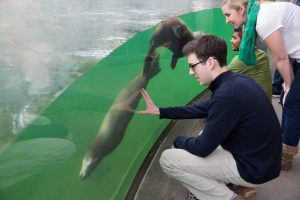
Q. The method is very detailed and elaborate. How did you convey this to others prior to the JoVE video?
A. I would bring a robotic flipper with me to various presentations. Having that physical object in hand made it easier to explain the mechanics to the audience.
The method to develop the flipper is fairly inexpensive, so we have used it to continue training new undergraduate students during their senior design projects.
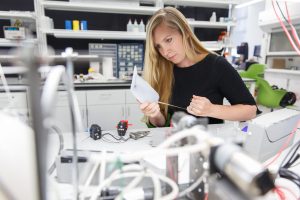
Q. What motivated you to publish this research in video format? Who do you think will directly benefit from this research video?
 A. I love JoVE videos. Reading protocols is hard. It is more impactful to see a method in a video, and that helps in not getting lost in complicated details.
A. I love JoVE videos. Reading protocols is hard. It is more impactful to see a method in a video, and that helps in not getting lost in complicated details.
Our JoVE Video Article will help other researchers like me, who pursue interdisciplinary research. I am not a roboticist, I am a fluid dynamicist. I use a robotic platform for my research. A JoVE Video Article like ours can really help understand specificities of research techniques which are outside someone’s comfort zone or area of specialization. The video should also help undergraduate students pursuing design projects using 3D print technology.
Q. Your research initially started off with videos, observing sea-lion swim behavior at the Smithsonian Zoo. Tell us about the experience.
A. The Smithsonian National Zoo is a great partner and resource. Not surprisingly, there is no existing protocol to keep sea lions in the lab. The population at the zoo is not a research population. For animal studies involving behavior, video is the only way to perform these studies. You have to film continuously to gather these observational data sets.
Our goal was to get a set of coordinates in 3D space for the sea lion fore flippers. To achieve this, we set up cameras and collected several hours of video data. Following that, we entered all the data in MATLAB and used a program to track it in a 3D visual system.
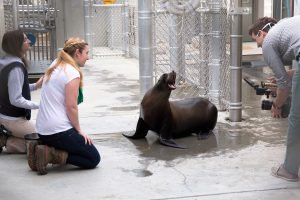
Q. What are some of your overall goals as a scientist?
A. I want to continue exploring fundamental natural flows, to better understand a natural phenomenon like sea lion swim behavior and human birth. As a professor, I feel very strongly about using my research as a tool to create the next generation of scientists. I enjoy being an educator and mentor for my undergraduate and graduate students. Even if a project fails I at least feel good about the fact that I am training a future scientist.
Q. What is the future of biomimicry research?
A. I will rephrase that as “bio-inspiration” instead of biomimicry. Our research is inspired by nature.
In the future, we will possibly see more integration of work between biologists and engineers. Engineers tend to be more function-based, and if they collaborate with biologists together they can help develop more holistic approaches in research.
Q. Do you have a message for other aspiring researchers, engineers, and students?
A. Don’t hesitate to try out your ideas – even the whacky ones. Some of them go places, some don’t. Too often students agonize over the fact if an idea is good or not. There are so many avenues available these days, explore them to try out your ideas.
